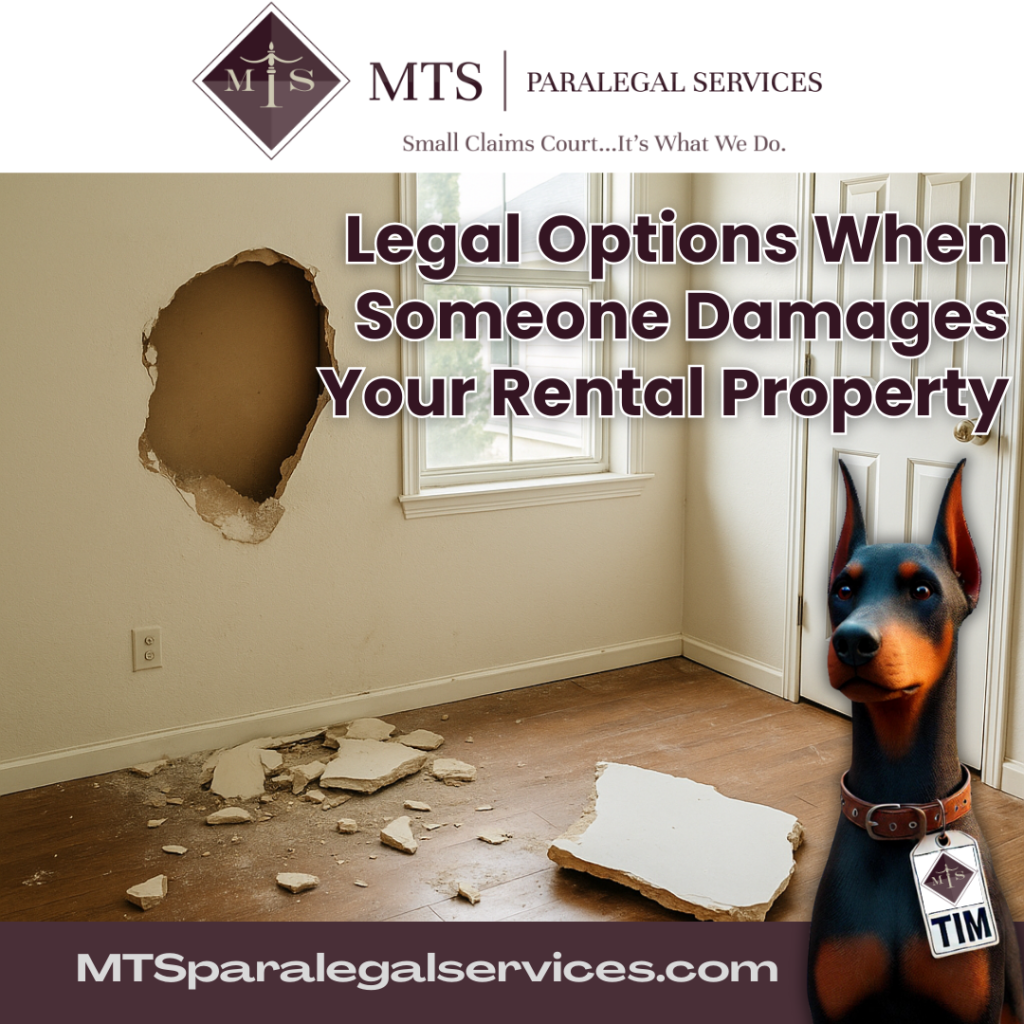
Legal Options When Someone Damages Your Rental Property
Owning a rental property comes with its share of responsibilities and challenges. One of the most significant concerns for landlords in Ontario is property damage caused by tenants or their guests. Whether it’s intentional vandalism or accidental damage, landlords have legal options to protect their investment and pursue compensation. At MTS Paralegal Services, Tim helps landlords navigate the legal landscape efficiently and in accordance with the Residential Tenancies Act, 2006 (RTA).
Understanding Rental Property Damage
Rental property damage refers to any destruction, impairment, or defacement of the rental unit beyond normal wear and tear. Common examples include holes in walls, broken windows, damaged flooring, and unauthorized alterations. It’s essential to differentiate between ordinary wear and tear—which is the landlord’s responsibility—and actual damage, which may give rise to a legal claim.
Landlord Rights Under the RTA
Under Ontario’s RTA, landlords have the right to expect tenants to maintain the rental unit in a reasonable state of cleanliness and repair. When a tenant causes damage, the landlord may:
- Request that the tenant repair the damage.
- Deduct the cost of repair from the tenant’s security deposit, if one was collected (noting that Ontario does not permit traditional damage deposits outside of lawful last month’s rent).
- File a claim with the Landlord and Tenant Board (LTB) seeking compensation.
Section 89 of the RTA specifically permits landlords to file an application with the LTB if a tenant or someone they permit in the unit wilfully or negligently causes damage to the rental property.
Legal Recourse Through the LTB
If the tenant refuses to take responsibility for the damage, the landlord can file Form L2: Application to End a Tenancy and Evict a Tenant, including a claim for the costs of repairs. The burden of proof lies with the landlord, who must provide:
- Photographic evidence of the damage
- Receipts or estimates for repairs
- A move-in and move-out condition inspection report (if available)
- Any communication records with the tenant regarding the damage
The LTB may order the tenant to pay the landlord for the cost of the damage and repairs, and in some cases, terminate the tenancy.
When Small Claims Court is the Better Option
Not all property damage disputes fall within the jurisdiction of the Landlord and Tenant Board (LTB). If the tenant has already vacated the rental unit or if the damage was caused by a third party—such as a guest, invitee, or unauthorized occupant—the proper venue for seeking compensation may be the Ontario Small Claims Court. As of October 1, 2025, landlords may pursue claims for damages up to $50,000, excluding interest and legal costs, through Small Claims Court when the matter falls outside the purview of the
At this stage, it is advisable to obtain legal representation to ensure compliance with procedural rules and evidentiary requirements. This is where the experience and knowledge of MTS Paralegal Services become invaluable.
Additional Considerations for Landlords
- Document everything. Keep thorough records, including lease agreements, inspection reports, and repair receipts.
- Communicate in writing. Email or letter correspondence can serve as evidence.
- Act quickly. Delay in addressing the issue may limit your legal remedies.
When dealing with rental property damage, it is crucial to act decisively and in accordance with Ontario’s legal procedures. Attempting to manage this independently may result in lost time, unresolved disputes, or denied compensation.
For timely and professional assistance, call Tim at MTS Paralegal Services at (226) 444-4882. With a proven track record in landlord-tenant matters and small claims, Tim ensures your legal rights are protected and your case is presented with clarity and precision.
This content does not constitute legal advice. For up-to-date guidance or legal advice specific to your situation, please contact MTS Paralegal Services or call (226) 444-4882.
